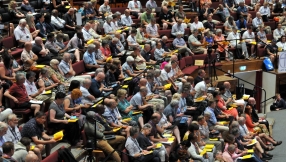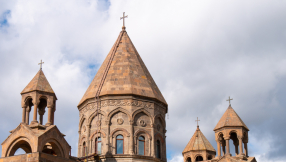New book celebrates 1,000 years of St Paul's Cathedral
St Paul's Cathedral Before Wren explores the the cathedral and churchyard over the course of its first 1,000 years.
The book, by the cathedral’s archaeologist John Schofield, starts with the cathedral's foundation in 604 AD and looks mainly at the findings of excavations conducted between 1969 and 2006.
Earlier discoveries are also considered, such as the Roman pottery kilns found by pioneering archaeologist John Conyers as foundations were being laid in 1677 for Sir Christopher Wren's building.
In 1087, the cathedral was built in medieval form and extended from 1269 to 1314 to make it the largest medieval building by area in Britain and one of the largest in Europe.
The book charts the neglect of the Reformation era and the revival in interest in the Elizabethan and Jacobean times when the cathedral choir became the site for prestigious tombs of courtiers and high-ranking officials.
The collection of post-Reformation monuments is second only to those which survive in Westminster Abbey and forms one of the very few representations of Elizabethan Londoners which remain today.
Schofield’s work considers major developments in the cathedral's understanding of Inigo Jones’s restoration of 1633-41 and the extent to which previous buildings were jumbled and re-cut for Wren's building.
Mr Schofield said: “St Paul’s Churchyard comprises probably the best and most significant remaining block of strata for the understanding of the evolution of the City of London through 2000 years.”
In his foreword to the book, former Dean the Rt Rev Graeme Knowles said: “It is surprising that the detailed physical evidence for the cathedral and the buildings in the churchyard has never been brought together in one publication.
"This publication is not simply a management document for us to use in the future. It also stands as a lasting record of those who have worshipped on this site for more than a thousand years, and who raised successive buildings here to the glory of God.”
The book is published by English Heritage, priced £100, and includes surveys, pictures and early maps.
Dr Simon Thurley, Chief Executive of English Heritage, said: “English Heritage is proud to support important original scholarship in our publication programme. John Schofield’s book at last gets us close to one of Britain’s most important, and most neglected, lost buildings.”













